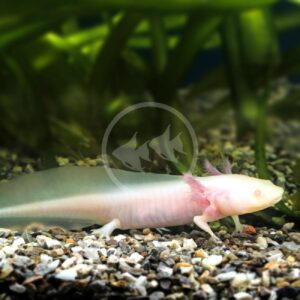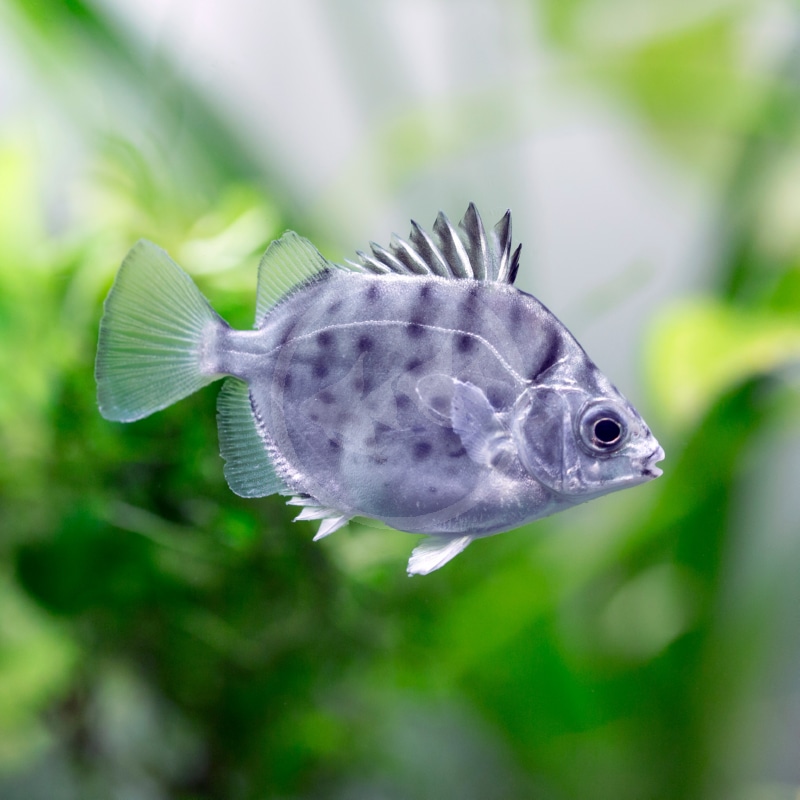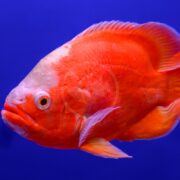
BRACKISH – SCAT SILVER
Selenotoca multifasciata
$19.99
The Silver Scat has a very large natural distribution throughout coastal areas of the Indo-West Pacific region. Here, they can be found in muddy estuaries, mangroves and harbors of freshwater, brackish or marine conditions. The Silver scat’s preferred habitat really depends on their age; juvenile specimens may be found temporarily in freshwater environments but require at least brackish conditions long term. Adults, on the other hand, prefer full marine conditions. Adult and juvenile Silver scats look similar, having a uniquely-shaped silver body with dull black spots ventrally and black vertical stripes dorsally. A social and shoaling species, the Silver scat should be kept in groups of at least 6 individuals but more are encouraged. All individuals should be introduced at the same time because Silver scats establish a hierarchical system. An adult Silver scat can reach a size of approximately 15″. Caution: The dorsal and ventral fins of the Silver scat are venomous. If stung, the sensation is similar to a bee sting but more potent. Remove any part of the spine from the affected area (if applicable) and put the wound underneath the hottest water you can tolerate (not scalding) for 15 – 20 minutes; this breaks down the venom proteins. Then seek the appropriate medical attention. For those that are sensitive to stings, seek medical attention immediately.
Care Level: Moderate
Temperament: Peaceful
Live Plant Safe: With Caution
General Description: The Silver Scat has a very large natural distribution throughout coastal areas of the Indo-West Pacific region. Here, they can be found in muddy estuaries, mangroves and harbors of freshwater, brackish or marine conditions. The Silver scat’s preferred habitat really depends on their age; juvenile specimens may be found temporarily in freshwater environments but require at least brackish conditions long term. Adults, on the other hand, prefer full marine conditions. Adult and juvenile Silver scats look similar, having a uniquely-shaped silver body with dull black spots ventrally and black vertical stripes dorsally. A social and shoaling species, the Silver scat should be kept in groups of at least 6 individuals but more are encouraged. All individuals should be introduced at the same time because Silver scats establish a hierarchical system. An adult Silver scat can reach a size of approximately 15″. Caution: The dorsal and ventral fins of the Silver scat are venomous. If stung, the sensation is similar to a bee sting but more potent. Remove any part of the spine from the affected area (if applicable) and put the wound underneath the hottest water you can tolerate (not scalding) for 15 – 20 minutes; this breaks down the venom proteins. Then seek the appropriate medical attention. For those that are sensitive to stings, seek medical attention immediately.
Diet Requirements: Silver scats are omnivores. A diet consisting of various frozen foods such as brine shrimp, blood worms and other saltwater or freshwater mixes that contain algae, such as spirulina, will maintain optimal health and coloration. Scats may also accept high quality flake foods and pellet foods.
Care Requirements: An established minimum 55 gallon aquarium is ideal for a group of small Silver scats. As these grow larger, a 125 gallon aquarium or bigger is more ideal. Length of the aquarium is very important for this species. Silver scats will appreciate some rock work and crevices to swim through, but prefer a lot more of open and unobstructed swimming space. Frequent, small water changes are encouraged to keep water parameters clean (Nitrates < 20 ppm) as they are intolerable to deteriorating water parameters. Silver scats are otherwise very susceptible to disease when not maintained in excellent conditions. Silver scats require generous water movement and higher oxygen levels due to their activity level. A common tank mate for Silver scats are Monos (Monodactylus spp.), though scats are generally peaceful and can be compatible with a wide variety of fish. As adults, they may be considered more semi-aggressive or pushy. Recommended water conditions, 72-78° F, KH 8-12, pH 7.2-8.5, salinity 1.010-1.025.
Purchase Size: Small: 1” to 1-1/4”, Medium: 1-1/2 to 1-3/4”, Large: 2” to 3”
Note: Your item may not look identical to the image provided due to variation within species. Purchase sizes are approximate.
Dry goods orders are shipped via US Postal Service or UPS to the address provided at checkout based on the selection made in your website shopping cart. Product is carefully packed to help prevent any damage during shipping. Once processed you will receive a shipment notification via email with tracking number, and delivery notification. Please allow 48 hours for processing after your order is placed.
Perishable items (i.e. live plants, refrigerated/frozen foods) are shipped via US Postal Service 2-3 day to the address provided at checkout for a $25.00 flat rate charge. Items are packed with secure packing material and heat, cold, or Cryo packs as needed to maintain safe temperatures during transit. If one or more perishable items are in the shopping cart at checkout the $25.00 perishable shipping charge will automatically appear and need to be selected. Once processed you will receive a shipment notification via email with tracking number. Please allow 48 hours for processing after your order is placed.
Livestock (i.e. fish, invertebrates, coral) are shipped via UPS Overnight to the address provided at checkout for a $55.00 flat rate charge. Livestock is packed in insulated styrofoam boxes with secure packing material and heat, cold, or Cryo packs as needed to maintain safe temperatures during transit. If one or more livestock items are in the shopping cart at checkout the $55.00 livestock shipping charge will automatically appear and need to be selected. Livestock is shipped Monday through Wednesday ONLY (no weekend delivery is available) weather permitting, and we reserve the right to delay shipping until conditions are appropriate for safe arrival. Once your order is placed we will contact you to arrange the best shipping date based on these criteria. Someone must be available to receive the livestock order on the first delivery attempt. Once processed you will receive a shipment notification via email with tracking number. Please allow 48 hours for processing after your order is placed.
For mixed dry goods/perishable & livestock orders items will be shipped via their corresponding shipping methods outlined above. Dry goods will be shipped via US Postal Service or UPS based on your selection and checkout, while livestock will ship via UPS Overnight for a $55.00 flat rate charge. You will receive separate notifications and tracking numbers for the dry goods and livestock. Please note due to different carriers and shipping methods dry goods and livestock may arrive on different days.
Related products

RASBORA – HET / HARLEQUIN
Trigonostigma heteromorpha
$5.99 – $8.99Price range: $5.99 through $8.99
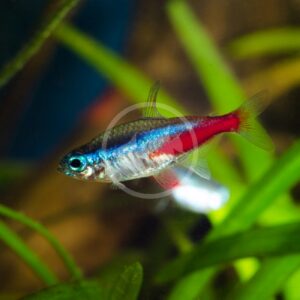
TETRA – NEON
Paracheirodon innesi
$6.99
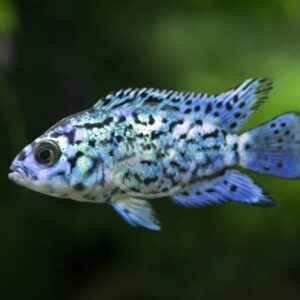
CICHLID – JACK DEMPSEY ELECTRIC BLUE
Rocio octofasciata
$19.99 – $99.99Price range: $19.99 through $99.99
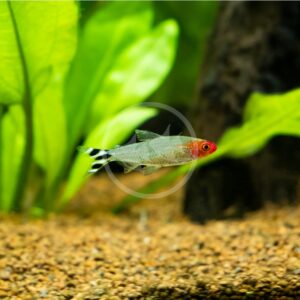
TETRA – RUMMYNOSE
Hemigrammus rhodostomuss
$9.99

MINNOW – WHITE CLOUD MOUNTAIN GOLD
Tanichthys albonubes
$5.99
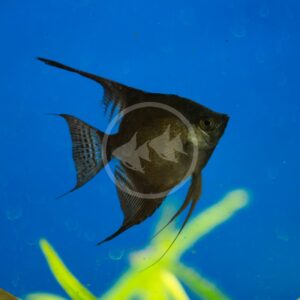
ANGELFISH – FW BLACK
Pterophyllum scalare
$6.99 – $49.99Price range: $6.99 through $49.99

GOURAMI – DWARF POWDER BLUE
Trichogaster lalius
$11.99 – $16.99Price range: $11.99 through $16.99
